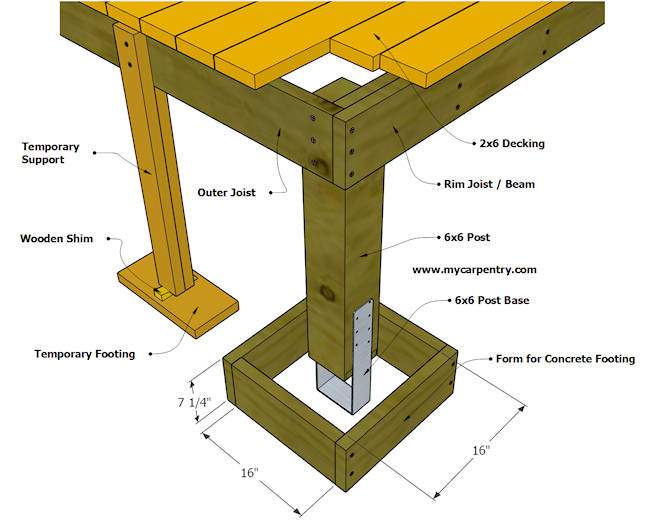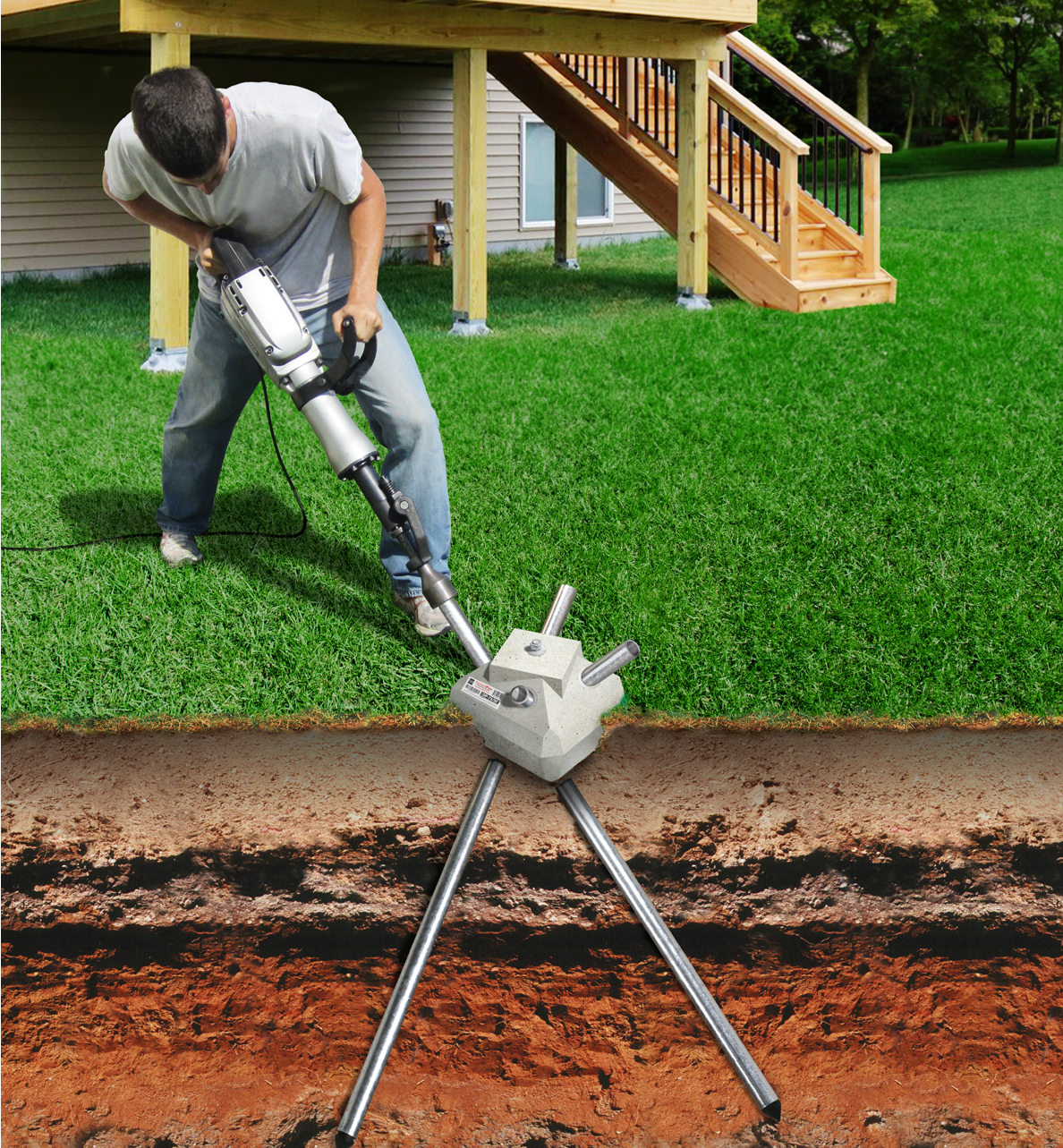Deck Footings Demystified: Guaranteeing Structural Integrity for Your Outside Area
Structure a Solid Foundation: Unveiling the Secrets of Deck Footing
When it concerns developing a deck, one crucial aspect that typically goes overlooked is the foundation or footing. A well-designed and strong deck ground is important for the stability and durability of any kind of deck structure. In this helpful guide, entitled "Structure a Strong Foundation: Revealing the Tricks of Deck Ground," we will certainly explore the importance of correct footings, the different types available, and the factors to think about when picking the appropriate ones for your deck project. We will provide detailed directions on exactly how to prepare and mount grounds properly. We will certainly talk about the importance of routine upkeep and assessment to guarantee the continued security and toughness of your deck grounds. Join us as we reveal the tricks to constructing a trustworthy deck structure.
Importance of Correct Footings

Among the primary factors why appropriate grounds are crucial is to avoid the deck from shifting or sinking. Grounds that are not deep enough or are poorly created can create the deck to resolve unevenly or shift over time. This can result in an uneven deck surface area, causing a tripping danger and jeopardizing the structural honesty of the whole deck.

Furthermore, correct footings also aid to safeguard the deck from dampness damage. By elevating the deck framework over the ground, footings avoid the timber from entering into straight contact with dampness, decreasing the danger of rot and degeneration.
Kinds Of Deck Footings
The choice of appropriate deck footings is a crucial element in making sure the security and durability of a deck framework. There are a number of sorts of deck footings that can be utilized, each with its own benefits and considerations.
One usual kind of deck ground is the concrete pier ground. This involves digging openings in the ground and pouring concrete to produce a solid foundation for the deck. Concrete piers are flexible and can be made use of in a range of dirt problems, making them a preferred selection for many deck jobs.
One more choice is the helical pier footing. This kind of ground contains a steel shaft with helical plates that are screwed right into the ground. Helical piers are perfect for areas with inadequate soil conditions or areas prone to high water tables. They provide superb stability and can be adjusted to the desired elevation.
For decks improved superficial or level foundations, a superficial footing may be ideal. Superficial footings are typically made of concrete and are put straight on the ground surface area. They are best matched for smaller sized decks or locations with steady soil problems.
Variables to Think About When Selecting Grounds
When selecting footings for a deck, it is vital to carefully take into consideration a number of factors that will eventually identify the security and durability of the framework. The first factor to take into consideration is the sort of dirt on which the deck will be built. Various dirt types have differing load-bearing capabilities, so it is important to examine the soil's capability to support the weight of the deck. In enhancement, the environment of the region must also be taken into consideration. Extreme climate condition, such as heavy rains or freezing temperatures, can influence the ground and potentially trigger motion or changing of the grounds. One more crucial aspect is the dimension and elevation of the deck. Larger decks with heavy tons or numerous levels need even more considerable grounds to offer adequate support. Additionally, the materials utilized for the grounds should be chosen intelligently. Typical alternatives include concrete, helical stacks, and sonotubes. Each product has its benefits and drawbacks, so it is vital to think about aspects such as price, ease of installation, and maintenance needs. Seeking advice from with a specialist designer or service provider can ensure and provide useful understandings that the selected footings meet neighborhood building codes and regulations. By thoroughly considering these factors, home owners can make informed choices when picking footings for their deck, guaranteeing a secure and durable framework.
Steps to Prepare and Mount Footings
To prepare and mount footings for a deck, it is vital to follow an organized approach that makes sure stability and resilience. The primary step is to determine the dimension and number of grounds required based upon the deck layout and local building ordinance. It is important to dig deep into the soil to the needed deepness, ensuring that the base of the ground Bonuses relaxes on uninterrupted soil or compacted crushed rock. The next action entails placing a concrete type tube or ground kind in the opening, ensuring it is degree and focused. The form ought to extend above the ground level to avoid water damages. Afterwards, strengthening steel bars, or rebar, are put inside the kind to provide additional strength. The rebar must be properly protected and spaced according to the engineering specs. When the type and rebar remain in area, concrete can be put right into the kind, loading it to the top. The concrete should be consolidated and smoothed using a shovel or a concrete vibrator. The concrete requirements to cure for the suggested period before any kind of added building and construction takes area. By following these actions meticulously, one can ensure that the grounds are properly prepared and installed, giving a strong structure for the deck structure.
Upkeep and Assessment of Deck Footings
To guarantee the long-term security and safety of your deck, regular maintenance and thorough inspections of the deck footings are vital. The deck footings act as the foundation of your deck, sustaining the weight and load of the entire structure. With time, these footings can experience damage because of numerous aspects such as navigate to this site climate condition, dirt movement, and the natural aging process. For that reason, it is essential to execute routine upkeep to determine any kind of prospective concerns and address them promptly.
Routine upkeep should consist of aesthetic examinations of the footings, searching for indicators of damage or damage. These can consist of cracks, moving or sinking of the grounds, or indicators of water damage. Additionally, it is essential to inspect the security of the grounds by using stress or conducting load tests if necessary.
Along with visual evaluations, it is suggested to arrange specialist examinations every couple of years. Specialists can assess the structural honesty of the grounds much more precisely and provide expert guidance on any necessary repairs or substitutes.
In addition, correct upkeep also involves taking safety nets to safeguard the footings (Deck Footings). This can include using water-proof layers to avoid water damages, ensuring correct drain to prevent too much dampness, and normal cleaning to remove particles and stop build-up
Verdict
To conclude, appropriate deck footings play a crucial function in ensuring the stability and long life of a deck. By recognizing the different kinds of footings available and thinking about aspects such as soil problems and regional building codes, homeowners can make informed choices when choosing grounds for their deck. Additionally, normal upkeep and evaluation of deck grounds is vital to identify any type of potential concerns and guarantee the safety and security of the structure.
In this informative overview, labelled "Structure a Strong Structure: Revealing the Tricks of Deck Ground," we will discover the significance of appropriate footings, the various types offered, and the factors to think about when selecting the best ones for your deck task.One common type of deck ground is the concrete pier footing.To guarantee the lasting stability and security of your deck, normal upkeep and thorough assessments of the deck grounds are important.In verdict, correct deck footings play a critical role in guaranteeing check my reference the stability and long life of a deck. By understanding the different kinds of grounds readily available and considering elements such as soil conditions and regional structure codes, home owners can make enlightened decisions when choosing footings for their deck.